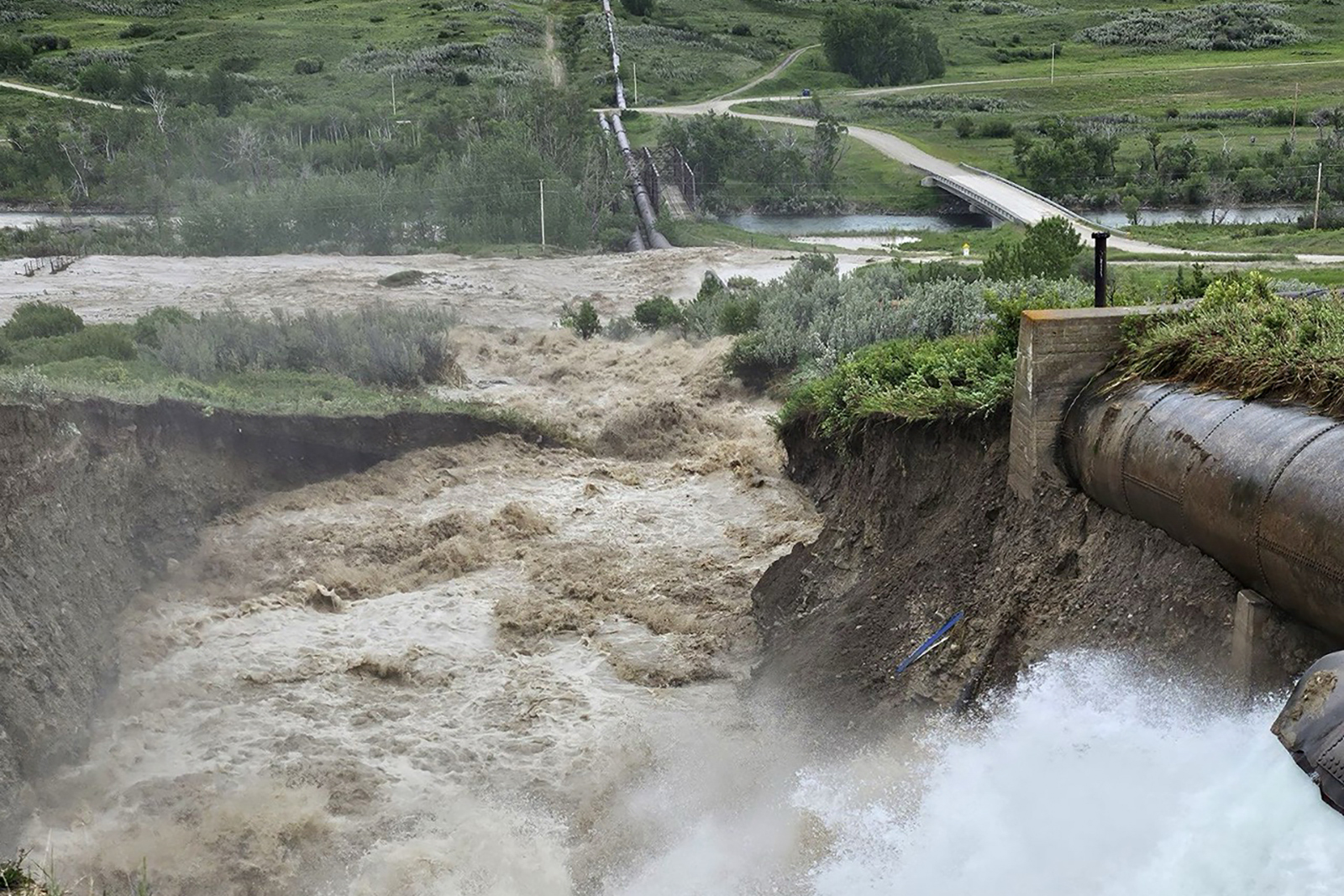The Milk River Project, a critical irrigation artery along Montana’s Hi-Line that’s been dry for a year, is expected to return to service months ahead of schedule, officials confirmed this week.
Project managers are cautiously talking about restarting the siphon that feeds the system by late June, around the one-year anniversary of an infrastructure blowout that left more than 300 miles of the Milk River dry. The initial estimate for completion was September.
More than 18,000 Montanans rely on the irrigation project for drinking water. There are 140,000 acres of irrigated farmland along its canals. Farmers lost half the water necessary to make it through 2024 and face a similar rationing challenge this summer that will leave tens of thousands of acres dry much of the season.
“We’re all pushing for the 17th, that’s one year. But we should be back by the first part of July,” said Milk River Project manager Jennifer Patrick.
Tough decisions are still being made. Tuesday night, Malta area farmers chose to draw down Nelson Reservoir for spring irrigation, which will give crops a better start, but will leave fields dry later in the season.
Nelson is one of two reservoirs that cannot recharge without water from the Milk. Fresno Reservoir near Havre is the other reserve, and by far the largest. Water rationed from the reservoirs has backstopped townships and irrigators for 11 months, but 54,000 acres of farmland between the two have gone unirrigated and will remain dry for the near future.
Until the siphon comes online and the reservoirs can be recharged, water is extremely limited.
“The siphon is the issue because there’s no way to fill Fresno. They’re going to open the gates on Fresno, but it’s only going to last about 15 or 20 days,” said Marko Manoukian, a Malta area farmer who is part of the working group for rehabilitating the irrigation project.
The siphon at the heart of the Hi-Line crisis is part of a century-old mega-project that redirects water from the mountain-fed St. Mary River to the Milk, which, without the assist, would typically run dry six out of 10 years.
The St. Mary River water diverted near Babb would otherwise flow into Canada and the upper reaches of the Hudson Bay drainage basin. Instead, the Milk supplies water to a few small Canadian communities before crossing back into the United States and eventually merging with the Missouri River.
By car, the Milk River’s path stretches 352 miles from Babb to the outskirts of Fort Peck. Viewed from the air, the Milk is a noodling thread of endless oxbows with green fields emanating from its banks. Beyond the irrigation project’s reach, the landscape is beige, and it takes 10 acres or more to support one cow and her calf for a year. Hay grown in the irrigated area — about 3.5 tons per acre, according to Montana State University — fuels cattle operations across the area.
No one was surprised by the failure of the St. Mary’s siphon. The condition of its 8-foot-diameter pipes had been a concern for decades. Failures along other stretches had sidelined the infrastructure as recently as 2020, as deferred maintenance caught up with the project.
Funding for major repairs has been a constant challenge. The federal government paid for the project’s initial creation, but beneficiaries of the project have been expected to shoulder more of the cost over the years, with loans from state government, including $26 million for current work, contributing to expenses.
The federal government has committed roughly $52 million for repairs to the St. Mary’s siphon, and another $18 million for a siphon at Halls Coulee, Patrick said.
In January, President Donald Trump, through the Office of Management and Budget, paused all federal funding. The pause, which was rescinded after two days, sparked a month-and-a-half delay of federal spending on the Milk River Project, during which state funding was spent down to keep construction going.
There was a risk that money to pay contractors wouldn’t be there, Patrick said, but federal funding did resume.
What’s important, Patrick said, is that the Hi-Line towns that rely on the irrigation project for drinking water had adequate water throughout the crisis.
Farmers will continue to ration water for the growing season. Drought is a big concern, Manoukian said. The prairie was bare this winter. The entire stretch of the Milk River Irrigation Project is currently in moderate drought, he said, which could worsen with a dry spring.
This story originally appeared in the Montana Free Press, which can be found online at montanafreepress.org.
